Publicações de Lídia Carvalho Gomes
Marinho, Enesio; Dias, Alexandre C.; Gomes, Lidia C.; Seridonio, Antonio C. F.; Meira, Gabriel M. C.; de Souza, Mariano; Soares, Samuel M.; Squillante, Lucas; Venezuela, Pedro; Rocha, Alexandre R.; Villegas, Cesar E. P. Optoelectronic properties of boron monochalcogenide monolayers: Quasiparticle and excitonic effects from first principles Journal Article Em: Phys. Rev. B, vol. 111, não 23, 2025, ISSN: 2469-9969. Resumo | Links | BibTeX | Tags: Orenstein, Rachel; Ciesielski, Kamil; Synoradzki, Karol; Qu, Jiaxing; Bipasha, Ferdaushi Alam; Gomes, Lidia C.; Adamczyk, Jesse M.; Berger, Shannon; Ertekin, Elif; Toberer, Eric S. Complex thermoelectric transport in Bi-Sb alloys Journal Article Em: vol. 12, não 1, 2025, ISSN: 1931-9401. Resumo | Links | BibTeX | Tags: Ciesielski, Kamil M.; Ortiz, Brenden R.; Gomes, Lidia C.; Meschke, Vanessa; Adamczyk, Jesse; Braden, Tara L.; Kaczorowski, Dariusz; Ertekin, Elif; Toberer, Eric S. Strong Scattering from Low-Frequency Rattling Modes Results in Low Thermal Conductivity in Antimonide Clathrate Compounds Journal Article Em: Chemistry of Materials, vol. 35, não 7, pp. 2918-2935, 2023. Resumo | Links | BibTeX | Tags: Toriyama, Michael Y.; Qu, Jiaxing; Gomes, Lídia C.; Ertekin, Elif VTAnDeM: A python toolkit for simultaneously visualizing phase stability, defect energetics, and carrier concentrations of materials Journal Article Em: Computer Physics Communications, vol. 287, pp. 108691, 2023, ISSN: 0010-4655. Resumo | Links | BibTeX | Tags: Carrier concentration, Density functional theory, Point defects, Python, Semiconductors Meschke, Vanessa; Gomes, Lidia C.; Adamczyk, Jesse M.; Ciesielski, Kamil M.; Crawford, Caitlin M.; Vinton, Haley; Ertekin, Elif; Toberer, Eric S. Designing for dopability in semiconducting AgInTe2 Journal Article Em: J. Mater. Chem. C, vol. 11, iss. 11, pp. 3832-3840, 2023. Resumo | Links | BibTeX | Tags: Ciesielski, Kamil M.; Ortiz, Brenden R.; Gomes, Lidia C.; Meschke, Vanessa; Adamczyk, Jesse M.; Braden, Tara L.; Kaczorowski, Dariusz; Ertekin, Elif; Toberer, Eric S. 2023. Resumo | Links | BibTeX | Tags: 2025
@article{Marinho2025,
title = {Optoelectronic properties of boron monochalcogenide monolayers: Quasiparticle and excitonic effects from first principles},
author = {Enesio Marinho and Alexandre C. Dias and Lidia C. Gomes and Antonio C. F. Seridonio and Gabriel M. C. Meira and Mariano de Souza and Samuel M. Soares and Lucas Squillante and Pedro Venezuela and Alexandre R. Rocha and Cesar E. P. Villegas},
doi = {10.1103/v37y-njhk},
issn = {2469-9969},
year = {2025},
date = {2025-06-23},
urldate = {2025-06-00},
journal = {Phys. Rev. B},
volume = {111},
number = {23},
publisher = {American Physical Society (APS)},
abstract = {We investigate the linear optical response and excitonic landscape in boron monochalcogenide (B𝑋, 𝑋 = S, Se, Te) single layers using ab initio many-body perturbation theory. These 2D monochalcogenides are wide band gap semiconductors, with the valence band exhibiting a quasiflat caldera-shaped dispersion in BS and BSe sheets, associated with strong van Hove singularities at the Fermi level in the density of states, an electronic feature that plays a crucial role in the emergence of strong excitonic effects. By solving the Bethe-Salpeter equation on top of 𝐺0𝑊0 quasiparticle energies, our results reveal that bound excitons arise from direct optical transitions between the highest occupied band and the lowest unoccupied band along the Γ−𝑀 and Γ−𝐾 paths. Additionally, in BS and BSe monolayers, we identify excitons that are bright for in-plane polarized incident light while becoming dark for out-of-plane polarization, and other excitons with the opposite behavior. The optical selection rules are described using group-theory analysis of wave-function symmetries, determining whether optical transitions are dipole allowed or forbidden. Furthermore, exciton radiative lifetimes are estimated to range from 0.2 ns to 1.6 ns at room temperature, while exciton binding energies are significantly high, ranging from 0.6 eV to 1.2 eV for both indirect ground-state excitons and zero-momentum direct excitons. Finally, the strong electron-hole interactions in these materials lead to the formation of tightly bound excitons with a small radius, paving the way for excitonic Bose-Einstein condensation in B𝑋 monolayers. Our study sheds light on the complex excitonic features of single-layer B𝑋, emphasizing its potential for cutting-edge applications in exciton-driven optoelectronics and quantum technologies.},
keywords = {},
pubstate = {published},
tppubtype = {article}
}
@article{Orenstein2025,
title = {Complex thermoelectric transport in Bi-Sb alloys},
author = {Rachel Orenstein and Kamil Ciesielski and Karol Synoradzki and Jiaxing Qu and Ferdaushi Alam Bipasha and Lidia C. Gomes and Jesse M. Adamczyk and Shannon Berger and Elif Ertekin and Eric S. Toberer},
url = {https://pubs.aip.org/aip/apr/article-abstract/12/1/011409/3333905/Complex-thermoelectric-transport-in-Bi-Sb-alloys?redirectedFrom=fulltext},
doi = {10.1063/5.0237802},
issn = {1931-9401},
year = {2025},
date = {2025-02-05},
urldate = {2025-03-01},
volume = {12},
number = {1},
publisher = {AIP Publishing},
abstract = {Bi1−xSbx alloys are classic thermoelectric materials for near-cryogenic applications. Despite more than half a century of study, unraveling the underlying transport physics within this space has been nontrivial due to the complex electronic structure, disorder, and small bandgap within these alloys. Furthermore, as Peltier coolers, Bi1−xSbx alloys operate in a bipolar regime; as such, understanding the impact of minority carriers is critical for further improvements in device performance. This study unites first principles calculations with low-temperature experimental measurements to create a generalized model for transport within semiconducting Bi-Sb alloys. Our exploration reveals the interplay between the complex, degenerate valence band structure with the extremely light conduction bands. By building a hybrid computational/experimental model, an understanding of both the electron and hole relaxation times emerges both as a function of temperature and energy. Special quasi-random supercell calculations reveal that, despite significant atomic disorder, the electronic band structures within the alloy remains largely unaffected and electron–phonon scattering dominates. For charge carriers near the band edges, the relaxation times are thus extremely long, consistent with cyclotronic behavior appearing at low magnetic fields (≪ 1 T). Modeling thermoelectric performance suggests that the valence band edge deformation potential is significantly weaker and highlights the potential for p-type compositions to meet or exceed the current n-type alloys.},
keywords = {},
pubstate = {published},
tppubtype = {article}
}
2023
@article{doi:10.1021/acs.chemmater.2c03821,
title = {Strong Scattering from Low-Frequency Rattling Modes Results in Low Thermal Conductivity in Antimonide Clathrate Compounds},
author = {Kamil M. Ciesielski and Brenden R. Ortiz and Lidia C. Gomes and Vanessa Meschke and Jesse Adamczyk and Tara L. Braden and Dariusz Kaczorowski and Elif Ertekin and Eric S. Toberer},
url = {https://doi.org/10.1021/acs.chemmater.2c03821},
doi = {10.1021/acs.chemmater.2c03821},
year = {2023},
date = {2023-01-01},
journal = {Chemistry of Materials},
volume = {35},
number = {7},
pages = {2918-2935},
abstract = {Recent discoveries of materials with ultralow thermal conductivity open a pathway to significant developments in the field of thermoelectricity. Here, we conduct a comparative study of three chemically similar antimonides to establish the root causes of their extraordinarily low thermal conductivity (0.4–0.6 W m–1 K–1 at 525 K). The materials of interest are the unconventional type-XI clathrate K58Zn122Sb207, the tunnel compound K6.9Zn21Sb16, and the type-I clathrate K8Zn15.5Cu2.5Sb28 discovered herein. Calculations of the phonon dispersions show that the type-XI compound exhibits localized (i.e., rattling) phonon modes with unusually low frequencies that span the entire acoustic regime. In contrast, rattling in type I clathrate is observed only at higher frequencies, and no rattling modes are present in the tunnel structure. Modeling reveals that low-frequency rattling modes profoundly limit the acoustic scattering time; the scattering time of the type-XI clathrate is half that of the type-I clathrate and a quarter of that of the tunnel compound. For all three materials, the thermal conductivities are additionally suppressed by soft framework bonding that lowers the acoustic group velocities and structural complexity that leads to diffusonic character of the optical modes. Understanding the details of thermal transport in structurally complex materials will be crucial for developing the next generation of thermoelectrics.},
keywords = {},
pubstate = {published},
tppubtype = {article}
}
@article{TORIYAMA2023108691,
title = {VTAnDeM: A python toolkit for simultaneously visualizing phase stability, defect energetics, and carrier concentrations of materials},
author = {Michael Y. Toriyama and Jiaxing Qu and Lídia C. Gomes and Elif Ertekin},
url = {https://www.sciencedirect.com/science/article/pii/S001046552300036X},
doi = {https://doi.org/10.1016/j.cpc.2023.108691},
issn = {0010-4655},
year = {2023},
date = {2023-01-01},
journal = {Computer Physics Communications},
volume = {287},
pages = {108691},
abstract = {Phase stability, defect formation energies, and carrier concentrations are closely interrelated features of semiconductors. Due to their joint dependence on the multidimensional chemical potential space, it is challenging to quantitatively establish patterns between these quantities in a given semiconductor, especially when the semiconductor is comprised of multiple elements. To enable synchronous visualization and analysis of these complementary material properties and their interdependence, we developed the Visualization Toolkit for Analyzing Defects in Materials (VTAnDeM). This python-based toolkit allows users to interactively explore how defect formation energies and carrier concentrations vary across the composition and chemical potential spaces of multicomponent semiconductors. Here, we illustrate the computational workflow that employs VTAnDeM as a post-processing tool for first-principles calculations and describe the data organization and theory underlying the visualization scheme. We believe that this software will serve as a useful tool for simultaneously visualizing the often complex and non-intuitive chemical potential – defect – carrier concentration phase space of semiconductors.
Program summary
Program Title: VTAnDeM – Visualization Toolkit for Analyzing Defects in Materials CPC Library link to program files: https://doi.org/10.17632/hz7dyc489v.1 Developer's repository link: https://github.com/ertekin-research-group/VTAnDeM Licensing provisions: MIT License Programming language: Python Nature of problem: Defect thermodynamics are often studied from the perspective of phase stability and defect formation energetics using first-principles calculations. The results are comparable to experimentally-measurable carrier concentrations. However, visualizing all properties simultaneously by exploring the multidimensional chemical phase space is not trivial. Solution method: VTAnDeM offers a graphical interface that allows the user to interact directly with the chemical phase space of a given material and to visualize the defect formation energetics and ensuing carrier concentrations. The computational methods derive from standard defect theory within the supercell approach. The synchronous visualization scheme provides a streamlined approach to analyzing defect-related properties in semiconductors and insulators, all in real time. Additional comments including restrictions and unusual features: Required packages, installation, and tutorials can be found on the Github page.},
keywords = {Carrier concentration, Density functional theory, Point defects, Python, Semiconductors},
pubstate = {published},
tppubtype = {article}
}
Program summary
Program Title: VTAnDeM – Visualization Toolkit for Analyzing Defects in Materials CPC Library link to program files: https://doi.org/10.17632/hz7dyc489v.1 Developer’s repository link: https://github.com/ertekin-research-group/VTAnDeM Licensing provisions: MIT License Programming language: Python Nature of problem: Defect thermodynamics are often studied from the perspective of phase stability and defect formation energetics using first-principles calculations. The results are comparable to experimentally-measurable carrier concentrations. However, visualizing all properties simultaneously by exploring the multidimensional chemical phase space is not trivial. Solution method: VTAnDeM offers a graphical interface that allows the user to interact directly with the chemical phase space of a given material and to visualize the defect formation energetics and ensuing carrier concentrations. The computational methods derive from standard defect theory within the supercell approach. The synchronous visualization scheme provides a streamlined approach to analyzing defect-related properties in semiconductors and insulators, all in real time. Additional comments including restrictions and unusual features: Required packages, installation, and tutorials can be found on the Github page.@article{D3TC00070B,
title = {Designing for dopability in semiconducting AgInTe2},
author = {Vanessa Meschke and Lidia C. Gomes and Jesse M. Adamczyk and Kamil M. Ciesielski and Caitlin M. Crawford and Haley Vinton and Elif Ertekin and Eric S. Toberer},
url = {http://dx.doi.org/10.1039/D3TC00070B},
doi = {10.1039/D3TC00070B},
year = {2023},
date = {2023-01-01},
urldate = {2023-01-01},
journal = {J. Mater. Chem. C},
volume = {11},
issue = {11},
pages = {3832-3840},
publisher = {The Royal Society of Chemistry},
abstract = {Ternary chalcogenide semiconductors (e.g., CuInTe2, AgInTe2, AgGaTe2, and Hg2GeTe4) have significant potential for excellent thermoelectric performance if appropriately doped. However, the efficacy of extrinsic dopants in these materials varies widely based on their native defect chemistry. Here, we investigate via first principles calculations and experimental transport measurements how native defect populations in AgInTe2 can be synthetically controlled. First principles calculations predict that acceptor VAg1− vacancies and donor InAg2+ antisite defects are the dominant native defects in AgInTe2. Depending on calculated synthesis conditions, the ratio of these two defect concentrations is predicted to vary by approximately ten orders of magnitude. Experimental transport measurements are correlated with synthetic stoichiometry to assess the predictions of dominant defects and carriers from computation. These results are experimentally tested using two model extrinsic dopants, Zn and Ge. Transport properties of doped samples are considered in regimes where native defects either permit p- or n-type dopability. Beyond impacting the dopability, the native defect concentrations (VAg in particular) correlate with a significant reduction in thermal conductivity (∼0.5 W m−1 K−1). Collectively, these results indicate that degenerate p- and n-type doping of AgInTe2 could be achieved if suitable dopants are identified. In the case of successful n-type doping, we expect the lattice thermal conductivity of such samples to be extremely low.},
keywords = {},
pubstate = {published},
tppubtype = {article}
}
@workingpaper{ciesielski2023origin,
title = {Origin of ultra-low thermal conductivity in unconventional clathrates: Strong scattering from extremely low-frequency rattling modes},
author = {Kamil M. Ciesielski and Brenden R. Ortiz and Lidia C. Gomes and Vanessa Meschke and Jesse M. Adamczyk and Tara L. Braden and Dariusz Kaczorowski and Elif Ertekin and Eric S. Toberer},
url = {https://arxiv.org/abs/2301.10821},
doi = {10.48550/arXiv.2301.10821},
year = {2023},
date = {2023-01-01},
urldate = {2023-01-01},
abstract = {Recent discoveries of materials with ultra-low thermal conductivity open a pathway to significant developments in the field of thermoelectricity. Here, we conduct a comparative study of three chemically similar antimonides to establish the root causes of their extraordinarily low thermal conductivity (0.4−0.6 Wm−1K−1 at 525 K). The materials of interest are: the unconventional type-XI clathrate K58Zn122Sb207, the tunnel compound K6.9Zn21Sb16, and the type-I clathrate K8Zn15.5Cu2.5Sb28 discovered herein. Calculations of the phonon dispersions show that the type-XI compound exhibits localized (i.e., rattling) phonon modes with unusually low frequencies that span the entire acoustic regime. In contrast, rattling in the type-I clathrate is observed only at higher frequencies, and no rattling modes are present in the tunnel structure. Modeling reveals that low-frequency rattling modes profoundly limit the acoustic scattering time; the scattering time of the type-XI clathrate is half that of the type-I clathrate and a quarter of the tunnel compound. For all three materials, the thermal conductivities are additionally suppressed by soft framework bonding that lowers the acoustic group velocities, and structural complexity that leads to diffusonic character of the optical modes. Understanding details of thermal transport in structurally complex materials will be crucial for developing the next generation of thermoelectrics.},
keywords = {},
pubstate = {published},
tppubtype = {workingpaper}
}



